
The medieval route of pilgrims, Camino de Santiago, or the path of Saint James, has become increasingly popular in recent years. The route has been abandoned for centuries before travelers worldwide started giving it attention upon reading Paulo Coelho’s The Pilgrimage or watching The Way.
For many, it’s more than a 100-kilometer hike. It’s a spiritual journey, a way to connect with the old ways, and an adventure where you can start alone and find friends along the way.
Whatever it is for you, there are many ways to experience it. Here you’ll find routes that can give you a sneak peek into what Camino de Santiago is like and routes that will qualify you for the official pilgrim certificate.
Table of contents: ()

Camino de Santiago short routes
Camino de Santiago is a spiritual goal for many. However, few people have the time to become a pilgrim in this fast-paced world. Sometimes, dropping out of the workforce for over 30 days needed to complete a longer route simply isn’t an option.
Here are three short routes for people who want to walk a part of Camino de Santiago in under 5 days. But remember that you can only get the Compostela certificate for walking at least 100 kilometers.
St-Jean-Pied-de-Port to Pamplona
This short route is just a small part of Camino Frances, but it can be one of the most scenery-rich ones.
Duration: It takes only 5 days to walk 74 kilometers of this route. Despite it’s in the Pyrenees, it doesn’t include major uphill hikes, so you don’t need to be extra fit to finish it.
Starting and finishing points: You start this route at a small beautiful town of Saint-Jean-Pied-de-Port. It’s a commune that stands on the river Nive. Most Camino de Frances routes come through this town, so it’s a great place to meet fellow pilgrims.
Even without this fact, this medieval town is worth seeing on its own. It has a rich history that connects not only with pilgrimages but also with Richard the Lionheart and Spanish Conquest.
From Saint-Jean-Pied-de-Port, you continue through Spanish towns of Roncesvalles and Zubiri to Pamplona.
Scenery: The route takes you on a medium difficulty hike through the Pyrenees. You’ll get to see well-kept medieval towns, beautiful mountains on the border of Spain and France, and waterfalls along the way.
Saint-Jean-Pied-du-Port (Source – creative commons)
When to consider: It’s a great 5-day route that’s full of engaging views and doesn’t require a lot of preparation. You can easily make it in your week-long vacation.
However, if you’re an advanced hiker, it may be not much of a challenge for you.
Tips: Make sure you have the documents ready, as you’ll have to cross the border between Spain and France.
Sarria to Santiago de Compostela
This route is also just a section of the larger Camino de Santiago route. It’s one of the busiest sections of the pilgrim’s path, and it’s full of people, too.
Duration: It’s a bit over 100 kilometers from Sarria to Santiago de Compostela. This makes this portion of the root one of the easiest ways to get an official certificate in the city.
It takes 7 days to complete the route, and it doesn’t have many difficult patches.
Starting and finishing points: You start this route by arriving in Sarria, a town mere 100 kilometers away from Santiago de Compostela. As you start moving westward, you will reach one small town after another, until you finally arrive at the end goal. The main key points of the journey are Portomarín, Palas de Rei, Arzúa, and Amenal.
Scenery: For the majority of its duration, this path lays off the beaten track. You’ll see plenty of rural landscapes and cross several rivers along your way.
When to consider: This portion of Camino de Santiago is rather busy and definitely not difficult. It’s a great opportunity to meet new people. Pilgrims who can’t do a full Camino de Santiago but want to make it to the Pilgrim’s Mass in the city can also find this route interesting.
Tips: Make sure your GPS is working properly, so you don’t get lost in small towns if you lose track of pilgrim signs. Having a translator in your pocket also helps, as few locals speak English.
Camino Finisterre
In the old days, people thought that the world ended in the westward part of Spain. This is why this route takes you to the end of the world, Finisterre.
Duration: The route is 89 kilometers long, and it takes 5 days to complete. It won’t qualify for a certificate but is a great hike nonetheless.
Starting and finishing points: While all other Camino de Santiago routes finish in Santiago de Compostela, this route starts in the city. Once there, you have to walk 60 kilometers to the small town of Hospital, and then proceed to Finisterre. The alternative way is taking another way from Hospital, and walking to Muxia.
Scenery: This route takes you through beautiful hills to the seashore. It shouldn’t be difficult for most travelers. The potential for panoramic shots along the way is high enough, but once you reach the end of the world, you will be amazed by the sheer beauty of the view.
When to consider: There are two kinds of people who set out to complete Camino de Finisterre. The first kind is made of people who have already walked across Spain for over 20 days, and another 5 days of the journey feels like the right thing to do. The other kind includes the people who don’t really care about the whole spirituality thing and just want a great hike that ends near the ocean.
Tips: Take beachwear with you, swimming after a 5-days trip feels awesome.
Camino de Santiago medium routes
If you’re an experienced traveler, you may find short routes a bit underwhelming. Especially if you were hiking in the mountains prior to taking a Camino de Santiago. Simply walking across relatively plain terrain won’t be much of a challenge for you.
If that’s the case, consider these three medium difficulty routes. All of these will qualify for the Compostela certificate.
The Spanish part of Camino Portugues
Originally, this route doesn’t start in Spain. You can make Camino Portugues 100 kilometers shorter, if you cut the Porto – Oia portion, and travel in Spain only.
Duration: Depending on your difficulty preferences, this route can be either 250 or 150 kilometers. The Spanish section of the route will take you up to 9 days to complete. If you want to start from Porto as the original Camino Portugues require, the whole route will take you 15 days.
Starting and finishing points: If you want to follow Camino Portugues from Spain, you could start at the southernmost point of the route, A Guarda. However, it takes unnecessarily long to reach, so you can cut down to Oia instead.
From that small coastal town, you’ll head to Vivo, then Pontevedra. From Pontevedra, it’s a 56-kilometer walk that will take you two days to complete.
Scenery: The beauty of Camino Portugues is that you travel along the coastal line for a significant portion of the route. Once you reach Pontevedra, you’ll walk across green hills.
When to consider: This portion of Camino Portugues is best suited for people who find walking across one type of terrain boring. It combines Galicia hills and beautiful seashore, so you get the best of two worlds.
Tips: Hit local restaurants to taste seafood. It’s as fresh as it gets in coastal towns.
Camino Ingles
Camino Ingles is the route English pilgrims took upon arriving in Spain from the British Isles. It’s still very convenient for the British.
Duration: The route will take you up to 7 days to complete, so it’s one of the easiest medium difficulty routes. You’ll walk 119 kilometers from the coastline, which qualifies you for the certificate.
Starting and finishing points: Camino Ingles starts in Ferrol, a port city in the North of Spain. From there, you head down to Pontedeume, Betanzos, and Hospital de Bruma. From Bruma, it’s only a 47-kilometer walk in almost a straight line.
Traditionally, you can also start Camino Ingles from A Coruña, but that doesn’t qualify you for the certificate. Also, it’s the Ferrol – Betanzos strip that makes this route medium, not easy, difficulty.
Scenery: Camino Ingles combines coastal landscapes with Galician hills just as Camino Portugues does. However, there’s a somewhat steep uphill strip close to Pontedeume that you have to be aware of.
When to consider: It’s a great route if you have no problems climbing hills and want to experience both the seashore and Galicia without walking Camino Finisterre. It’s very convenient if you live in the UK as well.
Tips: If you don’t want to miss A Coruña and still qualify for the pilgrim certificate, visit it first, and get to Ferrol to start the trip.
Camino Primitivo
Camino Primitivo or the Original Way is the most walked path among all Caminos. It’s believed to be the oldest one, and it attracts tourists from all over the world. However, few people walk the whole path, with most of the pilgrims choosing to go only the last 100 kilometers.
Duration: The original Camino Primitivo stretches across 312 kilometers. It will take you up to 16 days of walking to complete it.
Starting and finishing points: This route starts at Oviedo, a picturesque town near the Cantabrian Mountains. The town itself is so great it’s worth staying for a day or two. From Oviedo, you’ll make your way to Lugo and then Santiago de Compostela.
Scenery: The stretch between Oviedo and Lugo is mostly a trek across mountains. You’ll get to see lots of mountain lakes and rivers along the way. However, it requires you to quite fit because of the terrain.
From Lugo, it’s mostly green Galician hills and forests, so you can relax here after the rocky part.
When to consider: Consider Camino Primitivo only if you have prior experience of week-long trips across the mountains. This ensures the challenge is just right for you.
Tips: Don’t rush to the route from Oviedo, take time to explore the town.
Camino de Santiago long routes
If you want to fully experience what medieval pilgrims felt, or prove to yourself that you can walk for weeks straight, you have to choose the long route. It requires a lot of preparation and physical toughness, but the payoff is totally worth it.
Camino del Norte
Camino del Norte takes you to Santiago de Compostela along the Northern Spanish coastal line. It can be quite a challenge for novice pilgrims.
Duration: The whole route is 825 kilometers long, which people who are not familiar with Camino de Santiago may find it impossible. If you’ve been on one Camino trip before, you know it’s perfectly doable. It’s just that the route will take you up to a month to complete.
Starting and finishing points: You start this route at Irun, a town on the French border. From there, you march westwards along the coast, sleeping in albergues in fishing villages. At a certain point, you can join the busy Camino Primitivo to socialize or continue to walk along the coast.
Scenery: In a route that’s over 800 kilometers long, there’s plenty of diversity. You’ll see everything that northern Spain has to offer. Medieval towns with a rich history, Bay of Biscay, cliffs, Cantabrian Mountains, and Galicia.
When to consider: You can choose Camino del Norte if you feel like you can walk 20 kilometers per day for a whole month. You have to be fit, in good health, and willing to disappear from work for over 30 days.
Tips: Pack light. There are plenty of towns on your way where you can get food and everything you need. In a month-long journey, every gram is dragging you down.
A hundred grams worth of beachwear will probably only lift you up, though. There are plenty of opportunities to swim along the way.
Camino Frances
Camino Frances is one of the busiest Camino de Santiago walks by far. It stretches all the way from France to Santiago de Compostela and gives you the right to earn a Compostela certificate and feel the weight of your achievement.
Duration: Camino Frances is 780 kilometers long. It will take you a bit over 30 days to complete.
Starting and finishing points: The route starts at St-Jean-Pied-de-Port, a small town in French Pyrenees. From there, you make your way to Pamplona, then to Sarria, which is only 100 kilometers away from Santiago de Compostela.
Scenery: The French Way is for people who love lots of rural landscapes and mountains. There’s going to be a lot of that in your way. However, unlike Camino del Norte, it avoids trekking in mountains for the most part of the way, so you don’t have to be very fit to complete it.
When to consider: Go for Camino Frances if you want to experience the countryside, not Bay of Biscay coast. If you want to swim in the sea, go on Camino del Norte instead. Here, you can have a dip in a river once in a couple of days, though.
Tips: Don’t worry if you’re starting alone, there are plenty of people on this route and you can find friends along the way. Make sure to pack a raincoat, it may be raining even in the dry months.
Choosing a Camino
Walking one of Camino de Santiago routes is a great experience, both spiritually and physically. You don’t want to ruin it by going in unprepared. Pack light, check out other travelers’ experiences and make sure your legs are in good health before you begin.
+Chris Christensen | @chris2x | facebook
One Response to “Camino de Santiago in Spain: 8 Most Popular Routes”
Leave a Reply
Tags: article, camino de santiago, hiking, spain, trekking


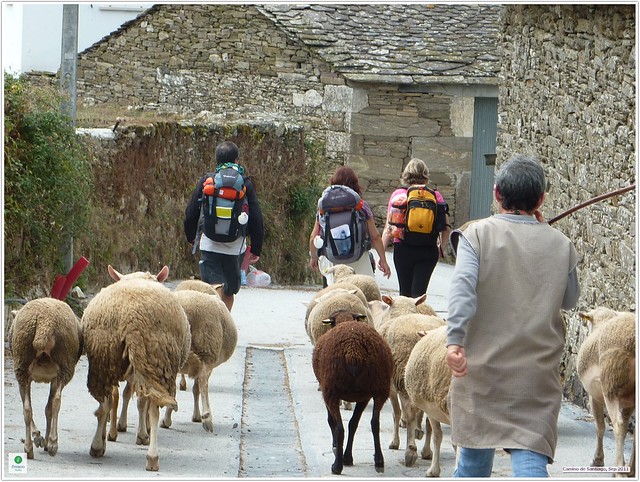
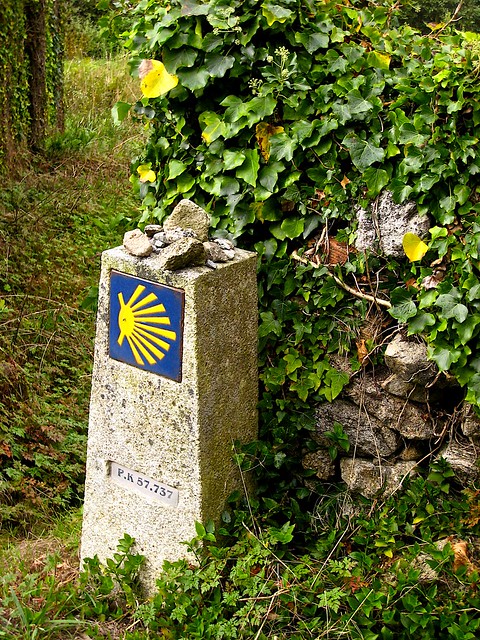
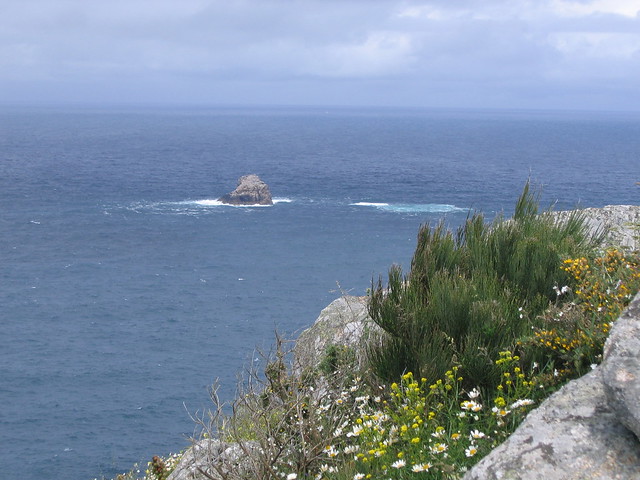
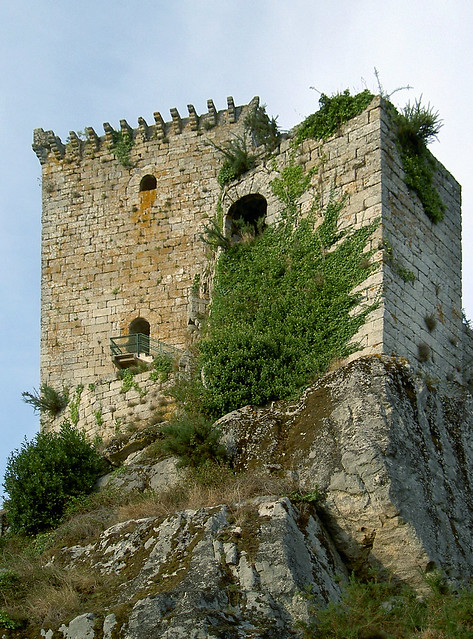
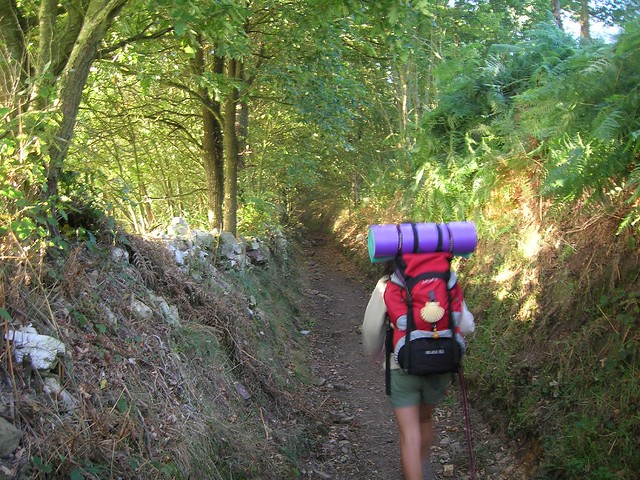


 Biking Spain’s Camino de Santiago – Episode 260
Biking Spain’s Camino de Santiago – Episode 260 Hiking the Camino de Santiago in Spain – Episode 482
Hiking the Camino de Santiago in Spain – Episode 482 Hiking the Camino de Ronda in Northern Spain – Episode 568
Hiking the Camino de Ronda in Northern Spain – Episode 568 Sunshine and Shellfish on a City Break in Vigo, Spain
Sunshine and Shellfish on a City Break in Vigo, Spain

Pablo Jones
Says:July 31st, 2019 at 3:29 pm
This is an informative blog, Thank you so much for sharing.